Something we’ve kept some track of for the past twenty-plus years is not only the age of certain planes but how many cycles they have flown. Cycles are take-offs and landings, which is a measure of the age of an airliner. To those of us in Hawaii who need to travel between islands, these planes are like our Greyhound Bus, but without the same wear and tear.
How we measure the age of an airliner.
Two of the most significant details are 1) the number of hours the airplane has flown and 2) the number of cycles (take-offs/landings) the plane has incurred.
Here in Hawaii, larger planes that fly longer distances tend to have more flight hours but far fewer cycles. Those planes that fly shorter distances, however, have higher cycles. Such is the case with planes used for interisland flights.
Airbus A321neo and Boeing 737 MAX, for example, don’t have many cycles yet.
Newer planes like the 737MAX planes used by Southwest, Alaska, United, and others, or the Airbus A321neo used by Hawaiian, Delta, and American, aren’t old enough to have amassed significant cycles. However, many older planes, like Boeing 737 early variants and the Boeing 717 aircraft, have high flight cycles.
Hawaiian Airlines Boeing 717 interisland planes: up to 75,000 cycles.
These planes, now mostly over 20 years in use, have significant flight cycles. One of the oldest in the fleet is N488HA. It first flew in October of 1998 and will be 25 years old later this year. Another is 489HA, which will also be 25 this year.
As a passenger fleet, the Boeing 717s represent the planes with some of, if not the very most, flight cycles anywhere in the world. BOH pilot friends have raved to us about the Boeing 717, and one captain still flying at Hawaiian said confidently not long ago that the 717 could keep flying indefinitely.
The Boeing 717, called initially the MD-95, is a twin-engine, narrow-body jet ideally suited for short-haul flights. The actual number of cycles that any plane can withstand varies with multiple factors. That being said, 60,000 flight cycles are typically reported to be the average service life of a Boeing 717 aircraft. That implies that the plane’s parts and integrity were initially set to withstand no less than that number of take-offs and landings.
Hawaiian Airlines has rigorous maintenance programs related to the safety and airworthiness of its planes. Hawaiian has a reputation for excellent safety and safety ratings and has been recognized for safety by IATA and others. It has never had a major incident in nearly 100 years of flight (since 1929).
Airline programs provide routine inspections, maintenance checks of various kinds, as well as retirement criteria when that is appropriate. They can significantly extend the service life of aircraft.
The Hawaiian Airlines 717 fleet is due to be replaced almost immediately, and we expect to see an announcement of the choice to replace it forthcoming at any time. We would be surprised if Hawaiian hasn’t already made a decision and is in the process of completing the details. To understand just what will happen, read Hawaiian Airlines: Four Different Mainland/Hawaii Aircraft; Fascinating Developments.
Aloha Flight 243 had 90,000 cycles and was patched with Bondo.
Flying distances of, on average, 100 miles per flight puts wear on aircraft. Aloha 243 was the Boeing 737-200, which suffered explosive decompression in flight over Hawaii years ago. The plane had about 35k flight hours and 90,000 flight cycles. It was initially designed for an approximately 75,000-cycle service life.
Improper maintenance was found to be one of the factors in that crash on April 28, 1988. When flying from Hilo to Honolulu, a section of the plane’s roof ruptured, leading to rapid decompression in the aircraft.
The NTSB investigation found that the primary cause was metal fatigue. The portion of the fuselage where the failure occurred had experienced pressurization and depressurization cycles over the plane’s 90,000 take-offs and landings, which NTSB said led to fatigue cracks that developed. NTSB also said that maintenance-related problems were contributory. Improper practices, such as using “bondo” repairs, were found on the aircraft. Bondo works well in automotive and home use but had been inappropriately used on corrosion found on the aircraft. NTSB also said that Aloha’s inspections and the FAA didn’t properly reveal the extent of fatigue damage already present on the plane. NTSB believed that proper inspections and repairs might have reduced the likelihood of the failure.
On a positive note, NTSB improved recommended maintenance procedures and practices and other safety measures following the incident and is seen as having a big impact on airline maintenance practices and oversight, plus better attention to aircraft fatigue.
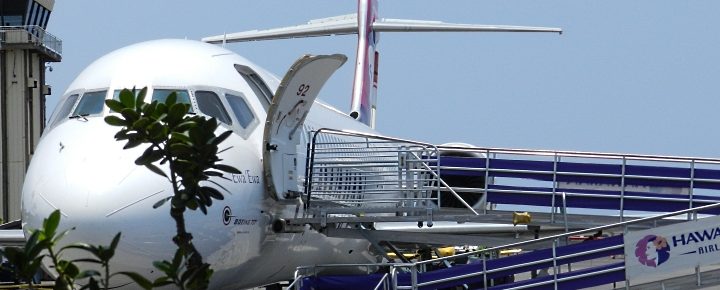
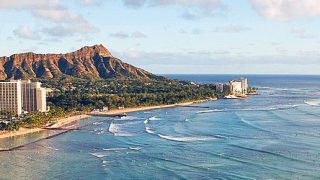
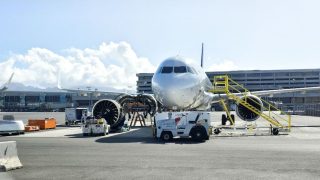
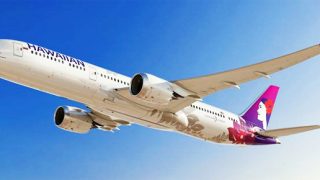

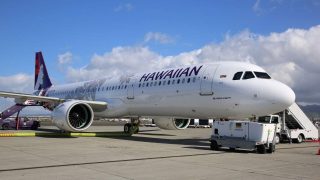
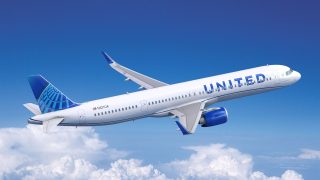
Airplanes, like anything mechanical, need proper maintenance. My guess would be that taking care of all planes would extend their service life and safety. Nothing can run forever. My Yugo finally died at almost 275 (yup, 275) miles!!
Hey BOH, no shoutout for my over 6 posts? LOL
Hi Joe.
No shoutout. That’s 8 to be exact! But thanks.
Aloha.
The 717 (MD-95), unlike most aircraft, do not have a specific number of cycles for its usable life.
On the larger variants, like the MD-83, sitting towards the rear of the aircraft in turbulence can give an “interesting” perspective of the flex in the fuselage.
The 2-3 seating configuration is superior to 3-3 when traveling as a couple. The MD-80 series planes were a quiet, comfortable ride, and I hope to fly on the HA 717s again before they are retired.
Another well designed product from the people who brought you the DC-3. It may say Boeing in its name today but it started life at Douglas as the DC-9.
Just to be accurate. Aloha 243 was not a crash. Though there were many casualties, the only fatality was one flight attendant who was sucked out of the torn roof. The plane made a successful controlled emergency landing on Maui. The pilot who landed the aircraft was a woman, coincidentally who taught the person to fly, who in turn taught me.
Hi Rich.
Thanks for sharing that lineage. Fascinating. We appreciate your more than 250 other comments too!
Aloha.